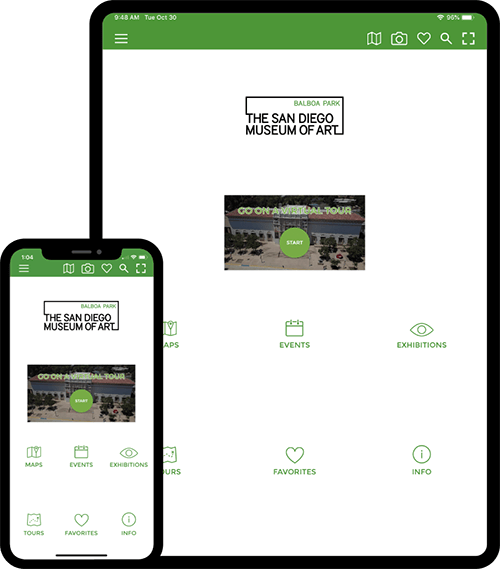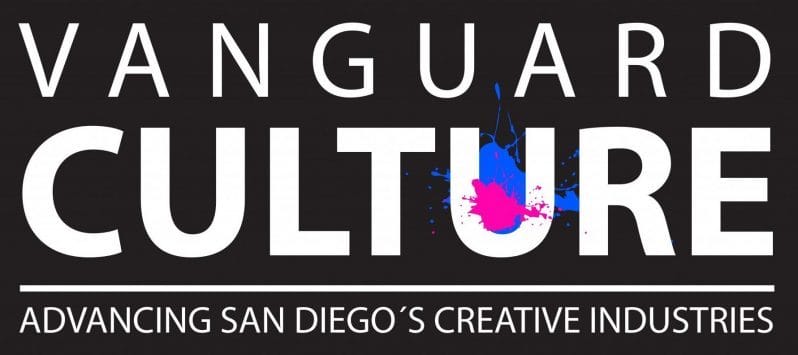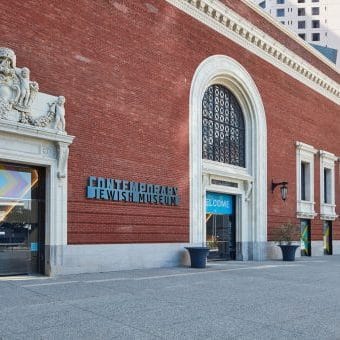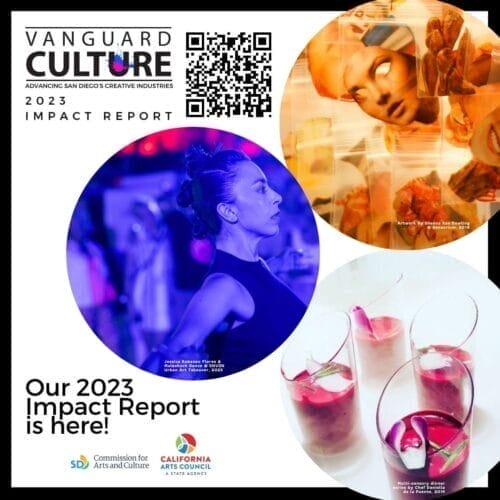By Cori Wilbur
April 7, 2020

Photo by JKA Photography.
Amidst quarantine closures, the Contemporary Jewish Museum, San Diego Museum of Art and others seize the opportunity to expand and create.
During crises, creativity can prevail–as proven by plagues and chaos of the past. For many, closures due to novel coronavirus halted lives and livelihoods completely. However, for members of the arts community, this period of pause can be utilized to focus on digital presence and ways to attract broader audiences.
“We are always touting the efficacy and far-reaching benefits of digital strategy and platforms,” noted Sarah Bailey Hogarty, the Director of Marketing and Communications for the Contemporary Jewish Museum in San Francisco. “[CJM’s] website is always going to have more visitors than its brick-and-mortar building well just because of the nature of the Internet. More than anything, [social distancing] is going to reframe the importance of digital strategy and content for museums.”
Most museums already had a substantial presence online by the time social distancing rules called for their closure. Now that the creative efforts and energies of museum staff can focus more on the digital space, individuals such as Hogarty can “deploy more bandwidth to this realm.” CJM, and museums all over, are harnessing this time to “develop and expand audience reach within core base audiences as well as new audiences that can be reached across digital channels.”
For individuals like Hogarty, who work directly with digital strategy, a broad based adoption of these tools and techniques feels victorious. About a week after CJM closed on March 13, along with several other institutions of its kind, the museum officially launched its new digital structure, geared toward home education as well as highlighting current exhibitions and personal reflection. On CJM’s site can be found a virtual tour of the current exhibit Levi Strauss: A History of American Style. In collaboration with the CJM’s award-winning educational team, accessorial content is provided to aid parents with homeschooling, implement Jewish practices throughout the week and keep audiences’ minds on the arts.

Meanwhile, the Brooklyn Museum offers virtual means to explore exhibits along with supplemental ways to keep audiences engaged as well, as part of their #ArtForTheSociallyDistanced social media development. Pertaining to recent exhibit Studio 54: Night Magic, relevant provisions include a video series breaking down disco dancing and a specially created disco playlist by the exhibit’s curator, Matthew Yokobosky.
The San Diego Museum of Art (SDMA) also yields virtual tours of present exhibitions, a technology they have fine tuned over the last five years. In addition, museums can utilize access to archives, re-engaging loyal patrons while simultaneously attracting a fresh, online following. Virtual museum tours, custom phone apps, YouTube channels, Facebook live and podcasts are proving to be significant tools within museum and nonprofit wheelhouses. “The real relevance of these platforms is now weighted in a very different way” commented Roxana Velásquez, Maruja Baldwin Executive Director for SDMA.

“So many museums have such wonderful stories to tell and there are so many deep artistic explorations that can be had,” Hogarty pointed out. “People are going to get real bored […] with celebrity content, […] people showing their workouts [or] going down meme holes; they are going to start to want content that educates them, that inspires them, that challenges them, that gets them to think.” Through social media, CJM, Brooklyn Museum, SDMA and institutions all over can recreate the contemplative nature of attending a museum with routine posts. #ZenDay and #ArtForLunch are among the hashtags CJM uses to provide elevated weekly content.
Kathryn Hatmaker, Executive Director for Art of Elan, a San Diego-based nonprofit said social distancing will be a real proof of concept for the organization’s Young Artists in Harmony program, which typically involves weekly workshops with Art of Elan mentors for select students facing adversity. She commented that “one of the silver linings here is that we can really invest in an individual way more […] there’s just a lot more flexibility in everyone’s lives right now.” Mentors and students are no longer hindered by scheduling conflicts and can spread lesson plans out over the course of a week, allowing for a deeper dive into music education.
The BaCH Initiative, instated in Fall of 2019, saw the Art of Elan musicians bringing the music of J.S. Bach to surprising places. This three-year commitment has adapted quite nicely to current circumstances, as many have begun to play their own Bach-centric concerts from their living rooms. Hatmaker acknowledged that the communal experience of enjoying the arts cannot be replaced but admired many’s ability “[to cultivate] a community that supports artists creating in the here and now.”
The Museum of Contemporary Art, located in Downtown San Diego and La Jolla, is brainstorming how to expand creative engagement online during this time as well. According to Kathryn Kajo, David C.Copley Director and CEO, said the museum is committed to the enhancement of arts education, despite the current obstacles. MCASD’s website offers a database which visitors can freely access and search. Work from the museum’s Extended School Partnership is also available for viewing on the site’s blog.

Another plus to this opportune time is the ability to reach those previously deterred or intimidated by the typical museum or concert hall setting. “One of museums’ greatest challenges is elitism, inaccessibility, high ticket prices, things that people who may not ordinarily think that a museum is for them,” Hogarty acknowledged. “I think that looking at distributing content via social media via Twitter via the Internet via our website, is really an opportunity to break down those barriers and reach out and communicate that museums are a vital part of society.”
Velásquez said she has spent much of her 27 years experience working in art museums refuting the notion that “if you are not an art historian, or a doctorate in art or from New York then you will never understand art.” She further noted that “art was done by human beings and it speaks to all of us.”
“By utilizing the far-reaching tools that technology has afforded us we can absolutely make [the] case [that art is for everyone] to […] an unfortunately incredibly captive audience,” Hogarty ventured. The circumstances are indeed unfortunate. However, now more than ever, time is on the side of targeting a new population of art patrons. “The Internet is the great democratizer, right?” Hogarty quipped.
When all goes back to ‘normal’, Hogarty expressed her hopes to “run [the digital and physical tracks] parallel so that we can continue to capitalize upon the gains we’ve made on the digital sphere.” As of right now, CJM’s Instagram experienced the most significant increase in viewership, in comparison to other platforms. She said her and her team will track the numbers to see just how far social media traction spikes.
“Regardless of when things go back to normal, being able to bring what we’re so passionate about to [so] many different kinds of places–that idea of liberating classical music from this ‘precious’ scenario in a concert hall–that won’t go away,” asserted Hatmaker.
In person, or online, the meaning of art remains the same. The love and appreciation for the arts and educating others continues to emit from the individuals determined to keep these museums and nonprofits afloat during such an indeterminate time. “In the art world we face a lot of challenges but also see a lot of talent and creativity,” praised Velásquez. “We owe it to this community” to use this time to create and inspire.



